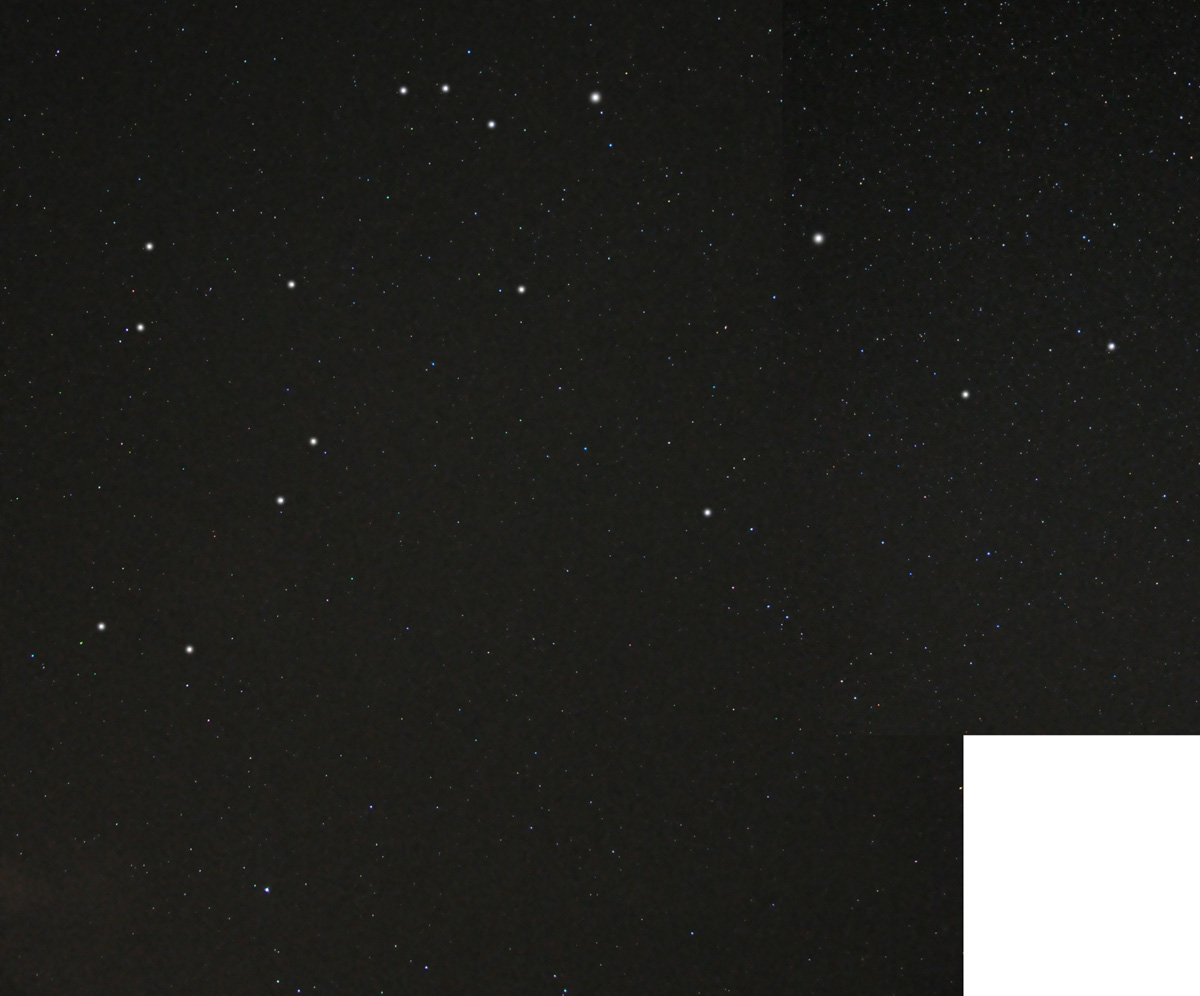Aquarius
Aquarius, The Water Carrier, is a faint and complex constellation that is somewhat difficult to match up with a recognizable star pattern and would not be well known if it were not in the zodiac. As a southern constellation, it requires a dark sky and good seeing conditions. The best way to get there is to look for the 4 stars that form the 'head' which lie south of Pegasus' hind foot. Sadachbia is a type A star 160 light years away, Sadalmelik is a type G supergiant, being 60 times the size of our sun and 3,000 times as bright, lying at a distance of 800 light years. Third magnitude Sadalsuud, the brightest star in the constellation, is also a type G supergiant, being 50 times the size of Sol and 2200 times as bright, lying at a distance of 610 light years. Sadalsuud is a triple system and is easily split into 3 stars in a moderately sized telescope. Ancha is a type G star very much like our sun in size and luminosity, lying 191 light years from Earth, and Skat is twice the size of the sun, 40 times as luminous, and lies 160 light years distant. The star Deneb Algedi is actually not in Aquarius, it is the tip of the horn of Capricornus, the Goat. But the star that is part of Aquarius that would otherwise form his front foot is fainter and hard to locate so in my diagram below, I have drawn the line for The Water Carrier's front leg going to Deneb Algedi instead - I beg forgiveness for the impropriety.
Although not being in the Milky Way, Aquarius is home to a number of faint galaxies, two globular clusters, including M2, and the Saturn Nebula, a famous planetary. M2, which is a very nice globular and can be seen in binoculars, is located on the image below.
The best time to view The Water Carrier is from late summer through October.
 |